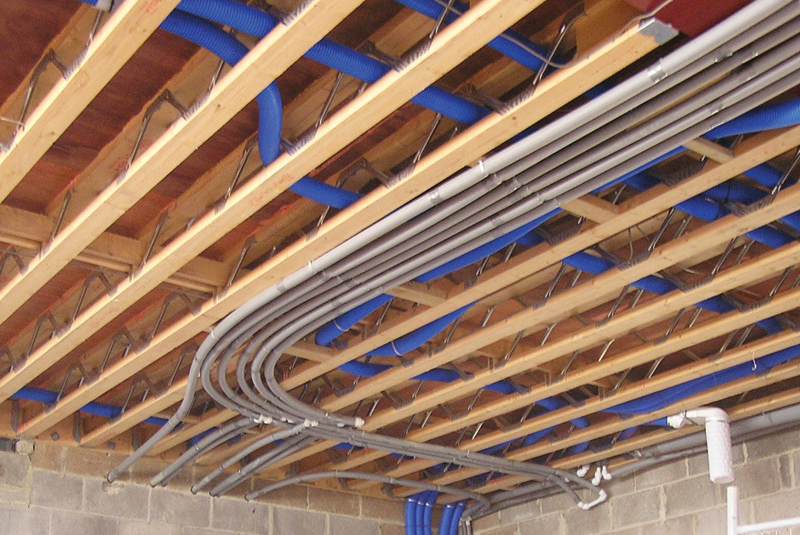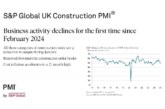
Offering information to merchant stockists, David Treharne, Senior Engineer at Domus Ventilation, answers the most commonly asked questions when it comes to domestic ventilation ducting.
Q. What types of ducting are available for domestic ventilation systems?
A. There are four types of plastic ventilation ducting systems: the original flat channel which is effective and space saving; the round pipe, which offers improved flow rates but can be problematic where space is at a premium; the low-cost flexible hose; and the latest addition — the radial.
Radial ducting is specifically designed for use with continuous mechanical ventilation systems. Unlike traditional branch style ducting, Radial uses 75mm semi rigid duct to connect directly from each room vent to a central distribution system, negating the need for various duct bends and connectors.
This system benefits from less air leakage and improved air flow, which also makes for easier commissioning and a quieter system, as well as it being quicker to install than traditional branch ducting. It is definitely worth pointing this out to customers, who may not be familiar with it!
The other ducting systems come in a variety of sizes and can be used for whole house ventilation or just for bespoke ventilation in the kitchen and bathroom. The type used may vary according to the ventilation system specified and further dictated by the installation requirements.
Q. How do I identify good ducting from bad?
A. Stocking good quality ducting is important. Substandard ducting could result in the ventilation system not meeting Building Regulations, through to a room with an ugly stain in need of redecoration as a result of leakage from the ducting system.
Sadly, there’s no standard to look for to help differentiate a product or range. Ducting that has been designed to work in harmony as part of a system and has been third party tested for end-to-end system performance is a very good starting point though.
Exacting tolerances, i.e. the fit of rigid extruded systems, is a sure indicator of quality. If the channel or pipe bows or looks like it is concave or the wall thickness appears uneven the tolerances will be too wide. This is a problem because these systems are designed to push fit.
If they don’t retain their shape, they can be difficult to fit together but more importantly they result in air loss which reduces the system efficiency and increases the risk of moisture leakage around the connections which can cause staining and damage to surfaces below.
Q. Are there any opportunities to add value to a ducting sale?
A. Yes, and your customers will thank you for it!
As well as straight ducting, make sure you stock moulded fittings and a range of bends from 90-45°. For example, the award-winning Domus Greenline 90° bends provide up to 60% reduction in resistance to air flow, significantly lowering a duct system’s total pressure loss and therefore overall energy usage. Having a wide range of ducting accessories provides customers with a variety of solutions to individual problems.
Ducting insulation is required to meet Building Regulation requirements as outlined in the Government’s 2010 Domestic Ventilation Compliance Guide. It’s also a good upsell.
The Guide states that ducting must be insulated where it passes through unheated areas and voids, such as loft spaces, to reduce the possibility of condensation forming, which can lead to unsightly — and unhealthy — mould. The Guide sets a minimum duct insulation standard which is the equivalent of at least 25mm of a material having a thermal conductivity of ≤0.04W/(m.K).
However, domestic duct insulation products on the market are often unable to meet this requirement, so check beforehand. Our own Domus Thermal exceeds it and therefore allows ventilation installers to fully comply with Part F 2010 Building Regulations.
Q. Is there a way to make ventilation systems quieter?
A. A noisy ventilation system is more often than not a result of ducting that is too small for the volume of air extracted, or poorly installed. This creates excess noise and added strain on the motor and reduces life expectancy of the fan. If this is the case, recommend larger ducting such as Domus Supertube.
Where the ducting isn’t the cause of sound, it can be the carrier of it. Sound can travel down the ducting from the fan, or from traffic noise or room-to-room-cross talk. Duct sound attenuators can be used, which effectively absorb sound over a range of audible frequencies. This makes for a very easy sale and a solution to a common problem.
Q. Can you explain what fire safety precautions are required?
A. Fire protection within buildings has grown in importance over the last few years and with the Grenfell Tower tragedy, fire safety is rightly seen as paramount. When a hole is made in a compartment wall for plastic ventilation ducting to pass through, the hole must be firestopped to restore the walls fire rating in accordance with Approved Document B of the UK Building Regulations.
It is essential that the firestopping product you stock has been specifically designed for this purpose. When a customer buys ducting, remind them about this.
For more information about Domus Ventilation’s range of products and services, visit www.domusventilation.co.uk.









